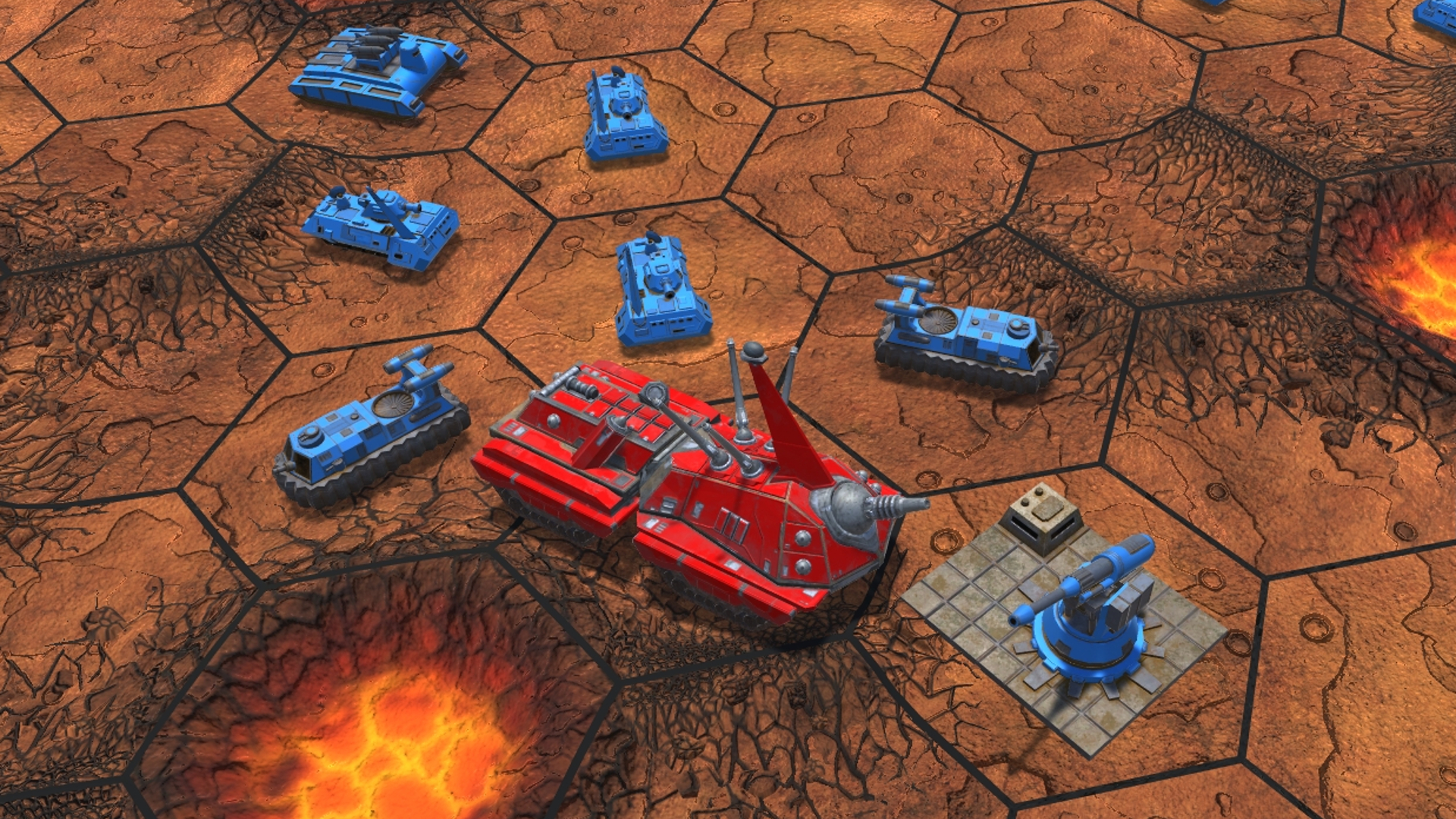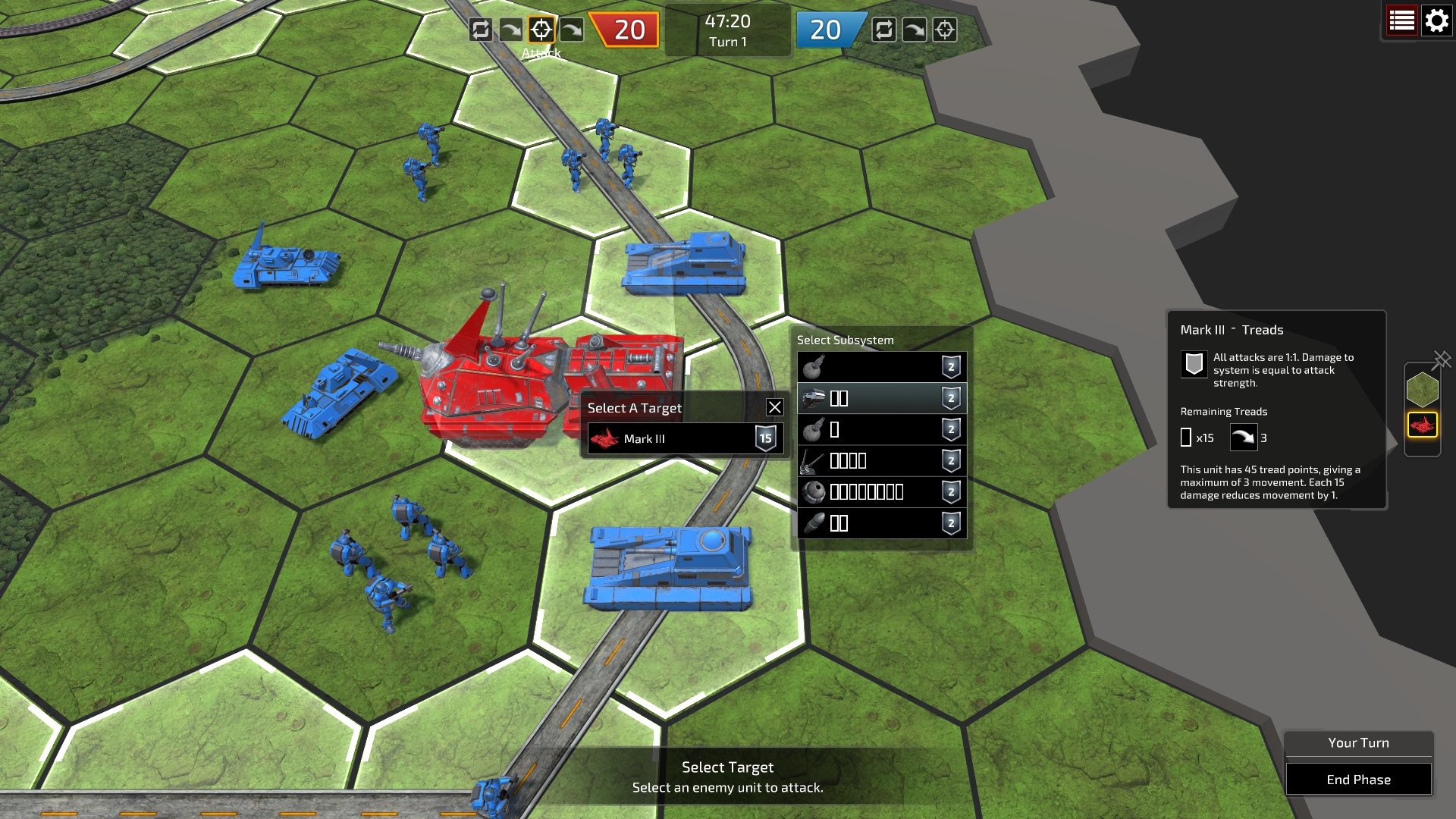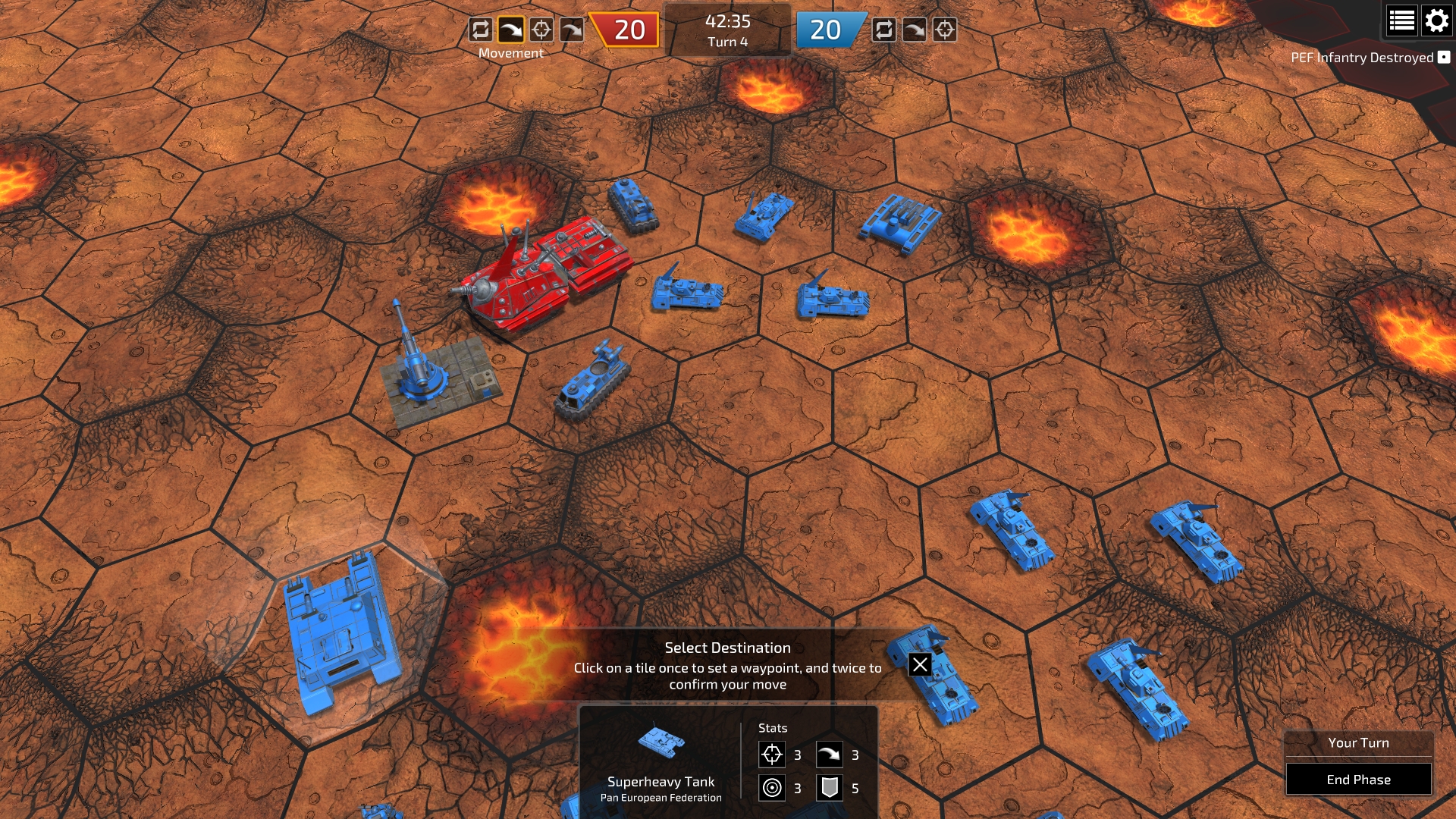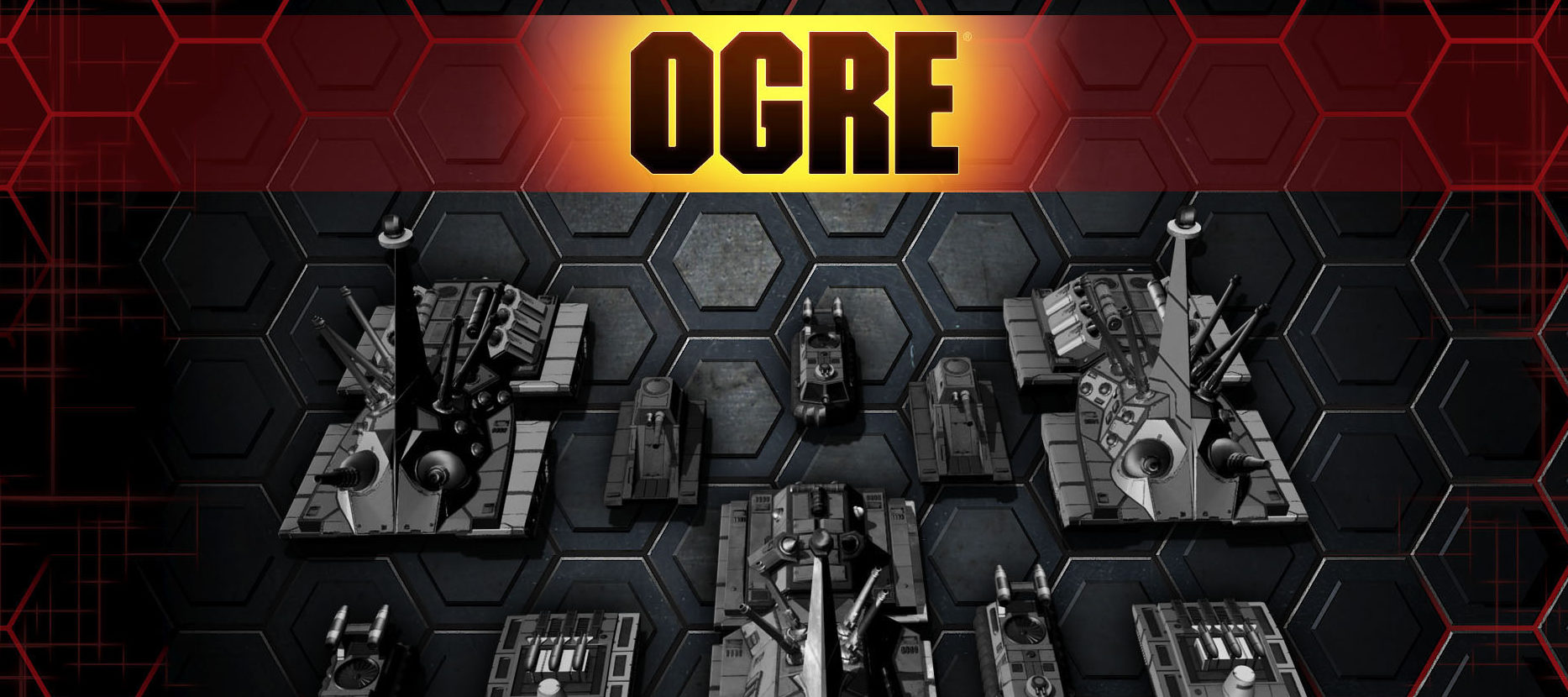40 years after its creation, The Classic boardgame Ogre comes to Steam. Has Steve Jackson’s Opus been faithfully realised in PC form? Read on..
Genre: Indie, Strategy
Developer: Auroch Digital
Publisher: Auroch Digital
Release Date: 5 Oct, 2017


Ogre is a turn-based strategy game of mechanized warfare, requiring tactical decision-making and strategic thinking. It’s the official video game adaptation of the legendary tabletop wargame from Steve Jackson Games, developed by the award-winning Auroch Digital.
In the warfare of the near future, one type of unit inspires such fear that even allies keep a safe distance: the Ogre. These AI-powered tanks are so powerful they’re the equivalent of a battalion of tanks and infantry.
Hovercraft, tanks, marines, infantry, and the monstrous Ogres all take part in an endless world war. As a player, you take command and vie for supremacy on the irradiated battlefields of the future.
Gameplay Video
It’s safe to say that Ogre is a behemoth is both senses of the word. As a military unit, it is the land-based equivalent of a capital ship found in space fiction. A huge mega tank, with multiple weapons systems, slow ponderous movement speeds and the focal point of any futuristic army. It’s also the same in the boardgaming scene. Created in 1977 by the legend that is Steve Jackson. For over 40 years the tabletop version has had many updates and reprints. In 2012 a successful Kickstarter campaign brought in almost a million dollars to fund a designer’s edition which weighed in at a mind-bending 27 pounds or 12 kilos for metric folks. One of stretch goals was to create a computer game based on the 6th edition rule set.
Auroch Digital has been tasked with bringing this classic game to the Steam marketplace. They are no strangers to board game conversions, having already produced Chainsaw Warrior and Dark Future. Both these titles are Game Workshop franchises, so I guess it was a no-brainer for the powers that be to reach out to them again.
Before I continue I’d like to mention that this is not the first version of the game to be released on the PC platform. Back in 1986, Origin systems produced a very basic 2D, top-down conversion for the Apple II, Amiga, Atari 8-bit family, Atari ST, Commodore 64, MS-DOS, and Macintosh. By today’s standards, it is a very crude and rudimentary port of the game, albeit faithful to the rule set and play systems of the time.

The lore behind the game is dense, so I’ll try to boil it down to the basics. Its 2085 and mankind has been in a perpetual third world war. All out nuclear conflict has been made redundant due to the realization of a Ronny Reagan style Strategic Defense Initiative. So theatre combat ala Nato versus the Warsaw pact is the norm. Swap those names for the fictional Paneuropean Federation and North American Combine forces, you get the picture.
Let’s get on to how this puppy plays. As a design document for turn-based strategy, it predicates all the classics; Famicom Wars, Rebel Star Raiders and the like. It’s pretty safe to assume that these games were influenced by the systems created by Mr. Jackson. This template would become the de facto rule set for most of the TBS games over the next 40 years. The classic 2 phase move and attack modes are here. The only addition is the GEV (hovercraft) unit which added a 3rd movement turn to convey the vehicle’s strength in navigating the terrain.
All the action takes place on a 23×23 hex map.This design choice is genius if you think about it and adds so much to the gameplay. Such a simple idea to use a 6 sided interlocking shape, that adds so much more depth to the strategy. Nowadays we take this as commonplace when playing any wargame. But to actually sit and down come up with the concept from a blank sheet of paper has to be admired. Its beauty and clarity shine through the ages. Fact fans might note that the first board game to use this shape was Charlie Robert’s Gettysburg way back 1961. So hats off to Chuck! Stand up job mate.

Given the name. Ogre is the obviously the star unit of the game. Long before Blizzard nicked the idea of hero units for Warcraft 3. A futuristic Panzer Tiger taken to the next level. It’s a formidable foe, replete with long-range missiles, multiple cannons, and short-range anti-personnel grenade launchers. To combat this beast, the opposition has the classic arsenal of heavy, light tanks, mobile howitzers, GEV’s (hovercraft) and various assault troop combinations.
Fundamentals in place. Good. What modes have Auroch brought to the -ahem- table. Let’s start with the single-player offerings. There’s a short 5 mission tutorial mode which walks you through the basics of the game, a robust 10 mission campaign, and a skirmish mode. Multiplayer has ranked matchmaking, custom and hot seat, for local style shouting shenanigans. For creative types, Steam workshop integration is burnt into the UI. No need to leave the game in order to browse/download all the custom maps and scenarios. Likewise with the map editor. It’s all under the same roof and most welcome.
As with all tabletop games, dice rolls play a significant part in the gameplay. At first, I found this frustrating but playing the game and understanding how unit stacking curbs this RNG in your favor, I began to accept as a fundamental feature of the game. War is random, guns can jam, overheat or just plainly malfunction. Now even if you plan and execute a certain strategy by the numbers, Lady luck might not shine on you. This makes every game session unique. I now can see the draw that this intrinsic tabletop element can bring to a digital game. The dice rolls aren’t hidden in some Lua script, they are front and center. During the attack phase, a beautifully rendered three-dimensional six-sided die is displayed above the defending unit, hanging like a Sword of Damocles, ready to decide the fate of the encounter.

Obviously, the game design and system have been balanced, edited and polished to a fine sheen with all the various editions and updates to the boardgame over the past forty years. The PC experience is reliant on two factors for a successful outcome: Ease of use and a competitive A.I. The user interface is clean but at times obtuse and clunky. There’s currently no option to move stacked units as one brigade. This leads to needless repetition and slows down the pace of the game. After completing 5 of the 10 single player missions in the campaign I’ve found the CPU opponent a worthy adversary. Trying different strategies on the second mission, resulted in the invading Ogre to take a completely different path to my trenched in defenses.
PC options are pretty verbose, given that this is yet another Unity powered title. There’s a decent amount of quality of life features including, skip opening sequence, skip unit animations and dice rolls. Five different audio sliders for music, ambient sounds, and volumes. The one fly in the ointment is the keyboard options. These are not bindable and pretty bare bones. I’ve reached out to the developer and suggested the Rewired plugin which most current Unity games are using as a one-stop human interface device manager. This adds a fantastic, highly customizable feature set that encompasses keyboard, mouse and gamepad options out of the bag.
Auroch has replicated the look and feel of the tabletop experience to the letter. The hex board maps are identical to the real thing. The color palette is bang on. The deep ochre of the original cardstock is rich and earthy, on the crater map. Spinning some of the campaign maps around, the water-based hexes reveal a subtle gloss finish and wave bump mapping. The attention to detail of the units is impressive. Zooming in reveals gun turret idle animation on the tanks. The GEV hovercraft air cushion turbine blades rotate convincingly. Overall the unit design from the original card concepts to the limited edition metal miniatures has been reproduced with care and professionalism.
The soundtrack for me didn’t shine. Sure it fits the tone of the game. Bombastic drums, swirling strings, and big chiming bell notes. It just didn’t jive with me. Apologies to the composers Tom Smith and Matthew Walker. When I think of future wars in a dystopian setting, I always hearken back to Brad Friedel’s iconic Terminator 2 main theme. Perhaps I’m asking too much of a video game and its limited budget. The music is serviceable but not memorable.

One more notable point is the Steam community. Since the game launch last week I’ve been generally surprised by the positive vibe in the official forum. Folks are chipping in valuable strategies for players new to the game. Custom maps have already begun to appear on the Workshop. I’ve begun to realize that if a title has some Kickstarter genesis, then the standard of the iteration amongst the player base is cordial, informed and intelligent. Not only are players cool but the Auroch development team have been very proactive towards bug reports, QOL queries, and general feature suggestions for updates. All replies from the devs come from numerous personal accounts and not some faceless corporate company account. This bodes well for the longevity of the game, which I am in no doubt is in safe hands.
Ogre is ground zero for turn-based strategy, much as Wolfenstein 3D opened the door to the first person shooter genre. Game historians owe it to themselves to check out this title. This is the motherlode, the genus, and the beginning. The gameplay stands up, even after four decades. It’s fresh, deep and compelling. Auroch has done a workmanlike job of converting this classic game for the modern era.











Minor nitpick: Steve Jackson the designer of Ogre is a native of the US. Steve Jackson of Games Workshop and the Fighting Fantasy series is a different guy.
Thanks for the quick reply. I have edited the article. You learn something new every day. I have to admit I’m not a huge board game guru so any extra information is most welcome. Cheers.
Great article, but I have a clarification for you…
“The only addition is the GEV (hovercraft) unit which added a 3rd movement turn to convey the vehicle’s strength in navigating the terrain. This added rule was implemented in 1990 update for the base boardgame.”
The GEV second movement phase has existed since the original 1977 release of Ogre. It was not added in 1990.
Thanks for clearing that up. I’m having a busy editing day. Thanks for the positive feedback and extra information.
On the other hand the Light Tank, Superheavy tank, and IIRC the mobile howitzer seen in the game are not present in the original editions of Ogre. Light tanks and superheavies were introduced with GEV – the major game expand-alone that provided the ‘green-map’ rules and focused on battles between conventional units rather than the original ‘stop the ogre’ challenge. Superheavies came in with the ‘Shockwave’ expansion to GEV.
All of the above (and a few other things that aren’t currently included in the computer game) are integrated into the Designer’s Edition of the board game, though.
I hope they add the GEV sequel with the scenarios. That will give a lot of life to this game.
The devs have mentioned about additional content on the official steam forum. They have been very pro-active with suggestions for future updates. Steam workshop support is already inbuilt so I’ve no doubt there’s going to be lots of new maps/custom scenarios forthcoming.
One last nit, Charles Roberts passed away in August of 2010. I know, I was the piper at his funeral.
Thanks for the extra info. His legacy lives on, whenever anybody plays a Hex based PC or Boardgame.